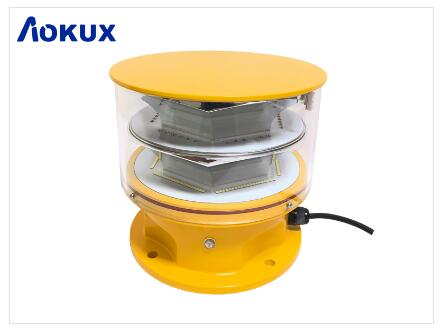
Obstruction lights play a crucial role in ensuring the safety of airports and airfields. These lights are strategically placed to warn pilots of the presence of tall structures, such as buildings, towers, and wind turbines, which could pose a potential hazard to aircraft. This article will explore the significance, regulatory requirements, types, and advancements of obstruction lights at airports, emphasizing their pivotal role in enhancing airfield safety.
The Significance of Obstruction Lights at Airports:
Obstruction lights at airports serve as critical visual aids for pilots. They provide essential cues to help pilots identify and avoid potential obstacles during takeoff, landing, and taxiing operations. By alerting pilots to potential obstructions, these lights significantly contribute to the overall safety of air travel and help prevent accidents.
Regulatory Requirements and Compliance:
Aviation authorities, such as the Federal Aviation Administration (FAA) in the United States and the International Civil Aviation Organization (ICAO) globally, have established regulations and standards for the installation and operation of obstruction lights at airports. These standards ensure uniformity in light intensity, color, and placement, enabling pilots to easily identify obstructions in compliance with international aviation safety practices.

Types of Obstruction Lights at Airports:
a) Red Obstruction Lights: Red lights are the most commonly used type of obstruction lights at airports. They emit a steady or flashing red light, indicating the presence of an obstruction. These lights are typically installed on tall structures such as buildings and towers.
b) Medium Intensity White Obstruction Lights: Medium intensity white lights are used to mark structures that are less tall but still pose a potential hazard to aircraft. These lights emit a white flashing light, providing visual cues to pilots.
c) High-Intensity White Obstruction Lights: High-intensity white lights are employed to mark tall structures, including wind turbines and communication towers, located in close proximity to airports. These lights emit a steady or flashing white light to ensure their visibility during day and night operations.
Advancements in Obstruction Lights at Airports:
Technological advancements have led to significant improvements in the design and functionality of obstruction lights at airports.
a) LED Technology: Light Emitting Diode (LED) lights have largely replaced traditional incandescent lights in aviation applications. LED lights are energy-efficient, have a longer lifespan, and provide improved visibility, making them an ideal choice for airport obstruction lighting.
b) Solar-Powered Obstruction Lights: The use of solar-powered obstruction lights has gained popularity, especially in remote areas where access to electricity is limited. These lights harness solar energy during the day and use stored energy to illuminate obstructions during the night, reducing the need for traditional power sources.
|
obstruction lights airport |
obstruction lights |
|
obstruction lights airport |
12 |
| 14 | 44 |